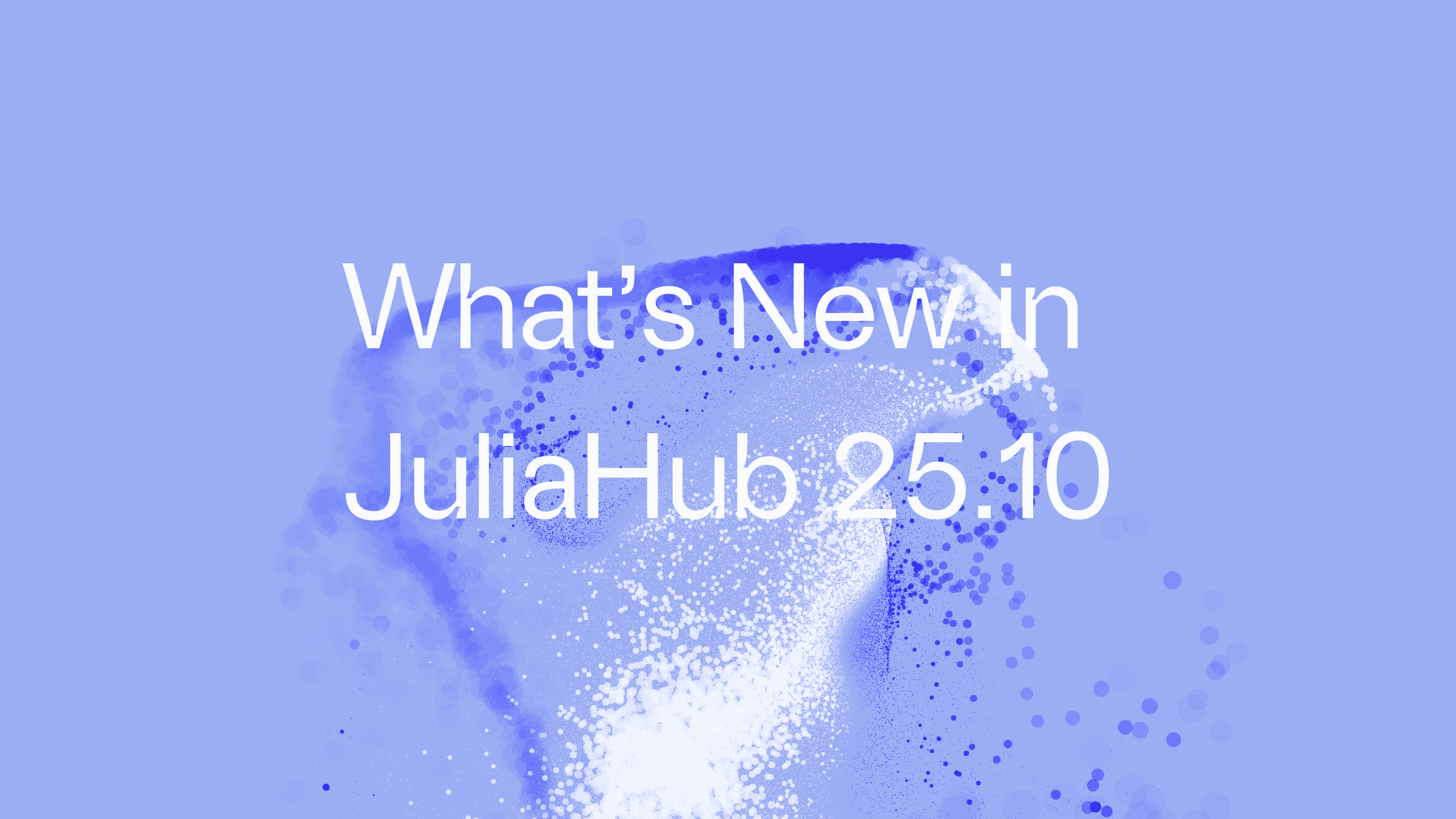
The promise of AI-assisted engineering is tantalizing: what if complex modeling tasks that typically take days could be completed in minutes? But there's a critical challenge that separates hype from reality—correctness. When AI generates code for real-world engineering systems, mistakes aren't just inconvenient; they can be catastrophic.
This is where Dyad's approach to agentic AI fundamentally differs from generic code generation tools. By combining AI agents with a constrained, unit-tested modeling language, Dyad creates a workflow that doesn't just generate code faster—it generates correct code that's ready for real-world deployment.
Watch this tutorial to learn how:
The Problem with Unconstrained AI Code Generation
Traditional AI code assistants can generate impressive-looking code quickly, but they often lack the domain-specific constraints that ensure physical correctness. When you ask a general-purpose AI to "create a thermal model," you might get syntactically correct code that compiles and runs—but does it conserve energy? Are the units consistent? Does it behave physically correctly across different operating regimes?
These aren't edge cases. They're fundamental requirements for any engineering model that will inform real design decisions, safety analyses, or system optimization.
Dyad's Solution: Agentic AI in a Constrained Modeling Environment
Dyad takes a fundamentally different approach by embedding AI agents within a model-based design framework that enforces physical correctness from the ground up. Let's explore how this works through a real example: developing a friction brake system model.
Mathematical Formulation with Physical Reasoning
When you ask Dyad's AI agent to create a friction brake model, the agent doesn't just generate code—it first researches the physics and proposes a mathematical formulation. This creates an opportunity for human review and iteration before any code is written.
In our friction brake example, the engineer can refine the model formulation through simple queries:
"Make the friction coefficient temperature-dependent"
"Add brake pad wear effects"
"Simplify the interface to just take brake pressure as input"
The agent responds with updated formulations and explains the implications: "This change will affect brake performance at high temperatures..." This isn't just code generation—it's collaborative engineering.
Unit Testing: The First Line of Defense
Once the formulation is approved, Dyad implements the model in a language with built-in unit testing. While Dyad currently has the information needed for full unit checking, correctness today is enforced primarily through tests. This means:
Forces are forces, not just numbers: If you try to add a torque to a force, the system catches it immediately
Automatic dimensional analysis: The AI agent knows that power dissipation must equal force times velocity, and the units must work out
No silent unit conversion errors: A classic source of engineering failures (remember the Mars Climate Orbiter?) is eliminated by design
When the AI agent implements the thermal model for the brake system, it's not just writing equations—it’s writing equations where heat_flow has units of Watts, temperature has units of Kelvin, and any mismatch is caught before the code ever runs.
Automatic Validation and Energy Balance Analysis
Here's where Dyad's agentic approach really shines. After implementing the thermal brake model, the agent automatically creates a unit test. But watch what happens next:
The agent runs the test and notices something: the energy doesn't balance. Without any prompting, the agent:
Recognizes the physical inconsistency
Performs an energy analysis by examining individual terms
Reasons that the system hasn't reached steady state
Extends the simulation duration
Verifies the corrected behavior
This is high-level engineering analysis—the kind that typically requires an experienced engineer to catch. The AI agent isn't just executing instructions; it's validating the physics and catching potential errors before they become problems.
Component Reusability with Guaranteed Interfaces
In model-based engineering, reusability is crucial. The friction brake model, thermal model, and vehicle model need to connect together seamlessly. Dyad's constrained modeling environment ensures:
Interface compatibility: Connectors have physical types (mechanical rotational, thermal, etc.) that must match.
Automatic connection validation: You can't accidentally connect a hydraulic port to an electrical port.
Parameterized components: Models include sensible default parameters but can be easily reconfigured.
When the AI agent creates these models, it's working within a framework that makes incorrect connections impossible.
Conservation Laws and Acausal Modeling
Dyad utilizes an acausal modeling approach with physical connectors. These physical connectors ensure that conservation laws are automatically applied at the connections. With these physical connectors, the agent can check that conservation laws are being applied properly at the component level and provide feedback on the modeling approach. For example, a resistor model that only considers electrical losses and not the resulting heat could be appropriate for some applications but is not truly conservative when analyzed physically. Engineering judgement is a natural part of physical modeling, and the AI agent can support by analyzing the resulting models, highlighting the impact of modeling assumptions, and proposing formulation changes to ensure conservation laws are being handled properly.
Real-World Example: Automated Calibration
One of the most impressive demonstrations of agentic AI in Dyad is the automated calibration workflow. The engineer gives a high-level query:
"Run a coast-down test and calibrate the drag coefficients to match a typical passenger vehicle."
The agent then:
Researches what a coast-down test is and how it's used for calibration
Implements the test procedure in Dyad
Iterates through different parameter values
Evaluates results against typical vehicle behavior
Updates the model with calibrated values
Documents the process with plots and summaries
This workflow might take an experienced engineer hours of work—running simulations, tweaking parameters, validating results. The AI agent completes it in minutes, and because it's working within Dyad's constrained environment, the results are physically sound.
From Minutes to Deployment: The Correctness Guarantee
The combination of these features creates something unique: AI-generated models that are correct by construction.
Unit testing prevents dimensional errors
Physical component types prevent connection errors
Connector-level conservation laws enforce physical consistency
Automated testing verifies boundary condition behavior
Agent-driven analysis identifies and corrects anomalies
This isn't just about speed—though completing in minutes what used to take days is impressive. It's about confidence. When Dyad's AI agent generates a model, engineers can trust it enough to use it for real design decisions, safety analyses, and system optimization.
The Graphical Layer: Executable Documentation
Dyad goes one step further by making these models graphically editable. The AI agent can:
Generate icons for components
Auto-layout complete system diagrams
Create live, interactive models that can be modified graphically
This means the AI-generated models aren't just correct—they're also maintainable and accessible to the broader engineering team, not just the specialists who understand the underlying equations.
The Future of Engineering: AI as Collaborative Partner
Dyad represents a fundamental shift in how engineers interact with AI. Instead of an AI that generates code you need to carefully review and debug, you have an AI partner that:
Understands physics and engineering principles
Works within constraints that enforce correctness
Validates physical behavior and catches errors
Generates tested, documented models
Produces reusable components ready for deployment
This is the future of engineering: not replacing engineers with AI, but amplifying their capabilities with AI that understands the domain, respects physical laws, and ensures correctness from the ground up.
Reach Out to Us
The friction brake system demonstration shows what's possible when AI agents work within a properly constrained modeling environment. Tasks that used to require deep expertise and significant time investment can now be accomplished through natural language queries—without sacrificing the correctness required for real-world deployment.
To find out more about using the Agentic AI workflow yourself, reach out to us at sales@juliahub.com
About Dyad
Dyad is a product by JuliaHub, designed to bring the power of the Julia programming language and AI-assisted workflows to model-based systems engineering. Dyad brings together cloud-native infrastructure, differentiable programming, and modular extensibility to support next-generation engineering workflows. It enables the development of continuously improving digital models by integrating AI with Scientific Machine Learning (SciML) in a safe, engineer-in-the-loop, environment.






